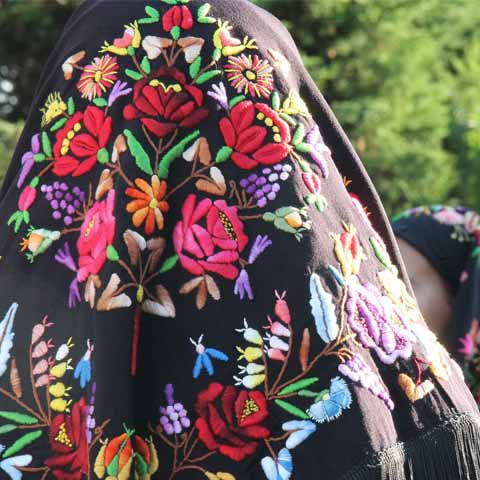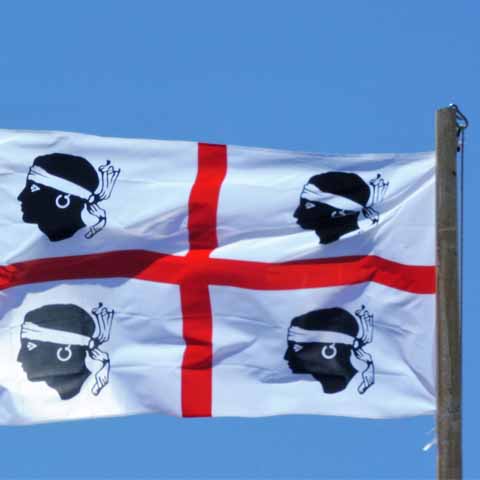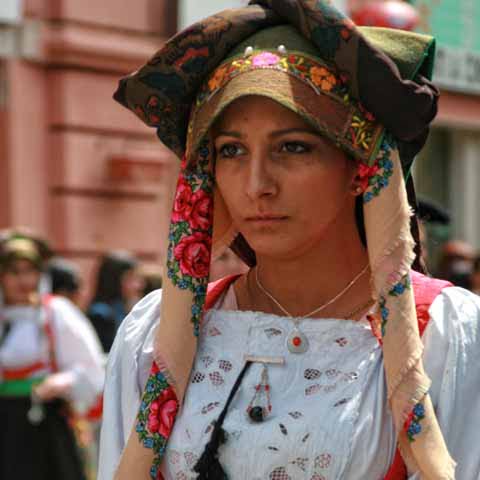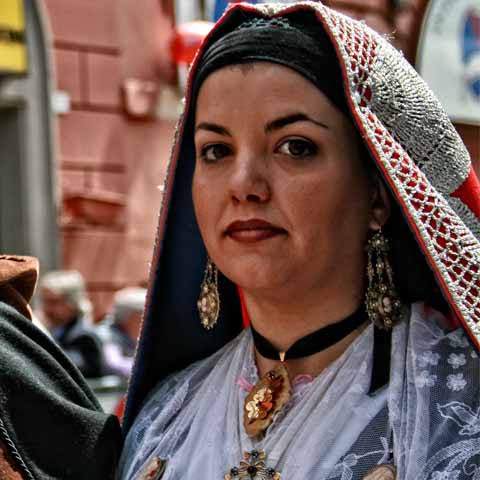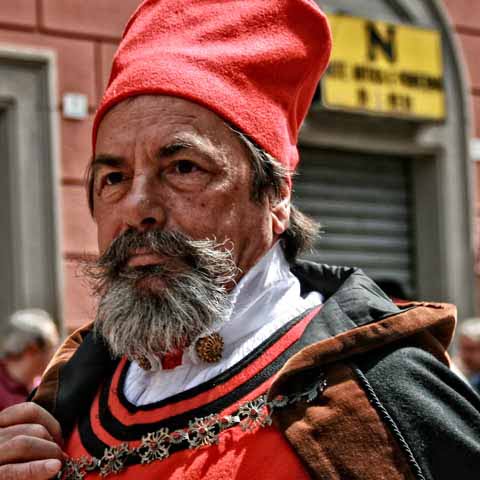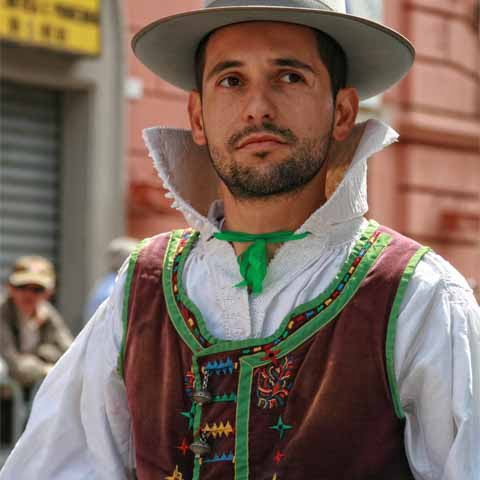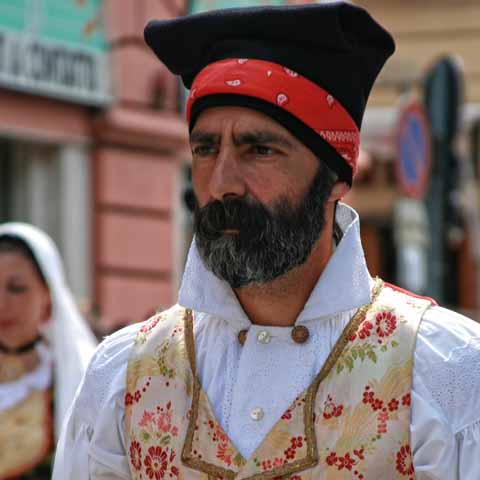Sardinia Culture Travel Guide
The island people of Sardinia are proud of their heritage and culture, and rightly so. Their history is remarkably rich. It begins with the language. Although Sardinians primarily speak Italian, they have their own language called Sardo. It is still widely spoken and is influenced heavily by Spanish, Arabic, and Latin. This unique language instills a sense of autonomy.
Sardinians are welcoming and gracious with a robust outlook on customs, along with a zeal for their island home. This is undoubtedly mirrored in their numerous festivals and activities that occur year-round. Sardinians are known to get pleasure from excellent meals and are known for their delicious, locally grown produce. Family is a significant part of the culture, so it is common for friends and family to gather for a pleasant Sunday meal.
It is true that Sardinia is part of Italy. However, Sardinians and their culture are uniquely distinctive. This is reflected in their food, art, music, history and architecture. It is an island of varying geographical features, from white sandy beaches fronting deep azure waters to lovely and romantic hidden grottoes, to rolling vineyards to mountainous landscapes. The different scenes combine to produce a place like no other. Daily life in Sardinia is relaxed and uncomplicated when compared with that of other countries. Sardinia is a warm and appealing island, abundant in a culture that is enhanced by natural beauty and wonder.
Sardinia’s Art
Generations of painters have given a robust flavor to Sardinian art. That influence is visible in a nearly mythological fashion, in portraits of shepherds, farmers, women, and the varied landscape. Artists such as Filippo Figari, Francisco Çusa, Eugèniu Tavolara, and Felici Melis Marini have all contributed masterfully.
Sardinia’s crafts are made to satisfy the everyday requirements of the agrarian populace. Sardinia’s works are produced for their functionality as opposed to their decorative purposes. However, they possess the flair and natural charm of island heritage. Only native components are utilized which include wool, hemp, wicker, coral, asphodel, cork, and silver.
The Sardinians clearly demonstrate innovation and style in their application of natural materials. Throughout the generations, cultural themes have been cultivated on pottery, wood carvings, and jewelry. Sardinian crafts blend the areas customs with an organic inclination toward style, capturing the unique essence of the Islanders.
Architecture in Sardinia
Sardinia’s location at the heart of the Mediterranean Sea has always garnered foreign interests. Invaders such as the Phoenicians, the Carthaginians, as well as the Romans achieved varying results in subjugating the indigenous people.
Sardinians tended to relocate inland away from the invaders, leading to comparatively few coastal settlements. The invaders introduced their particular techniques of farming, building design, and infrastructures. For example, the Roman system of roads and the Cagliari amphitheater show the influences of other peoples. These had a marked influence on native traditions and heritage.
Distributed around the island are distinctive and mysterious edifices called the Nuraghe structures, that date back to the Bronze Age. Most remarkable are the circular towers, many of which are still intact. The Nuraghe di Primavera, close to Alghero, is among the most complete village complexes.
An array of structures in the town of Bosa are painted in such a way as to produce a candy-colored effect. The city has Roman roots and was a flourishing location in the middle ages.
Castelsardo is an enchanting coastal community well worth a visit. On the rise above a collection of pastel homes, is the impressive Doria Castle. The castle was constructed in the 12th century by the Doria family. At present, it is a Museum showcasing fascinating Mediterranean weaving.
Found in Cagliari, The Bastion of Saint Remy is a prominent limestone building that one time sheltered the city from invaders. It was incorporated into the walls that were built in medieval times. It is a tribute to the Baron of Saint Remy.
Nowadays, the traditional structure’s wide veranda is residence to several vibrant cafés and is a preferred site to meet for cocktails.
The heart of Sardinian architecture may be found in the myriad of churches that populate the city centers and dot the countryside. The arrival of masons from Pisa heralded in the Romanesque style that is still dominant to this day.
Cuisine in Sardinia
In Sardinia, lots of people live to be 100 years old or older—more so than any place else on the planet. Long life is attributable to the island’s tranquil way of life and a healthy diet. Sardinia is heaven for those who appreciate excellent meals. Discover aromatic bread, tempting roasted meats, fabulously fresh seafood, numerous styles of Pecorino cheese, garden-fresh fruits and veggies straight from the grower, not to mention full-bodied wines presented and sold from provincial vineyards. The Sardinian menu is famous for fresh, in-season ingredients from the region.
Although there isn’t a consistent culinary culture, depending on the urban center, village, or region, seafood-based and meat-based recipes and regional pasta specialties and a variety of other dishes are popular throughout Sardinia. For example, the ample range of appetizers include cheeses, sausages, and olives. The suckling pig and the seadas, a tasty pastry with new cheese and honey are commonly found around the countryside. Topped off with a glass of cooled Mirto liqueur, the repast is complete.
Music and Festivals in Sardinia
Folk customs are a fundamental element of Sardinian culture as is exhibited by the many local festivals. The festival of Sant’Antioco (the patron saint of Sardinia) now in its 660th year is among the most significant affairs of the island and represents tradition, folklore, religion, cuisine, and is a beautiful diversion for the entire family.
The feast of “Sant Miquel” is legendary and held on a yearly basis during the final weekend of September, with a 12-day fete in honor of St. Michael, the patron saint of the city. This festivity once marked the conclusion of the summer in Alghero; currently, it is essential for visitors who enjoy traditional costumes and music. The folk dances with classic apparel are a must-see, and the music defines the heart and soul of the region.
Sardinia has a great deal to offer people, year-round, whether they want to unwind and relax or explore the rich culture and history of the area. Sardinia literally has something for everyone.
Travel Guides
The Sardinia Region of Italy
The Cities of Sardinia, Italy
